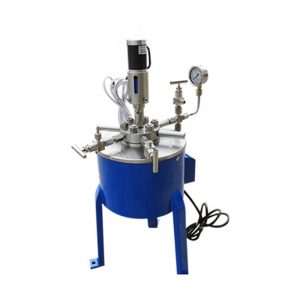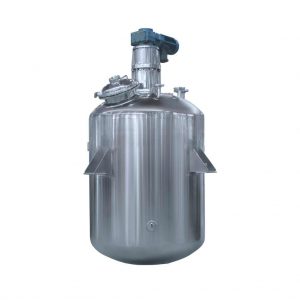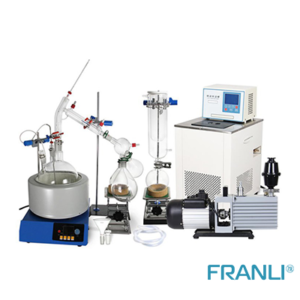Home » Single-layer glass reactor|Installation & maintenance
Single-layer glass reactor|Installation & maintenance
Glass Reactor
Details of Glass Reactor
- Using the latest reaction technology
- It has high temperature resistance, corrosion resistance, and high durability.
- Heating methods include steam, electric heater, high temperature heat transfer oil
- Using jacket, half pipe, fan coil, and other structures
Application: Chemicals, pharmaceuticals, dyes, pesticides, petroleum, food additives, etc.
Installation of single-layer glass reactor
1. Before assembling the single-layer glass reactor, carefully check whether the equipment accessories are complete according to the packing list and whether the glass parts are complete and undamaged.
2. Assemble the stainless steel frame according to the instructions. This is relatively simple. Generally, the bottom of the large glass reactor is equipped with casters, and the four legs can be kept stable and not shaking on flat ground.
3. According to the height of use, fix the kettle body bracket on the vertical rod slider, place the single-layer glass reaction kettle on the bracket, pay attention to ensure that the main body of the reactor is vertical, and insert the semi-circular hoop into the vertical rod slider respectively. To fix the neck of the kettle, and finally tighten the fixing screws.
4. The slider stainless steel multi-purpose clip on the support pole can be adjusted by sliding. It is used to fix the kettle body bracket and electrical parts in different directions and at different heights. There are generally two poles for a single-layer glass reactor, and four for a double-layer glass reactor. pole.
5. Install the electrical box on the top of the right rear pole and tighten the screws. Install the vacuum gauge on the rear end and tighten the screws.
6. The stirring rod is fixed on the gear ring chuck of the main shaft of the motor. The stirring rod passes through the middle rotating bearing of the cover, tighten the connector, and then adjusts the position of the motor, paying attention to the center of the kettle body vertically.
7. When installing glass instruments, it must be cleaned, and vacuum grease can be applied to each interface to prevent the glass from being bitten, and at the same time to ensure its good air tightness.
8. Fix the universal casters and turn on the power to test the machine. If the stirring is stable and there is no abnormal noise, and the vacuum degree is good, it means that the debugging has been completed.
9. The left standard on the bottle cap
(1) Used to insert a snake-type reflux condenser, the right side is marked
(2) for feeding
(3) Connect the constant pressure funnel, mark the center and front
(4) It is the opening for inserting the thermometer casing, and the mark on the back of the kettle cover.
(5) It is a multi-function spare port, with a discharge valve at the bottom, the bottom port of the kettle body is connected to the circulating liquid inlet, and the top port is connected to the circulating liquid inlet.
(6) Connect to the circulating fluid return port.
Maintenance of single-layer glass reactor
1. Carefully check the instrument before use, whether the glass bottle is damaged, and whether the interfaces are consistent, and pay attention to handling it with care.
2. Wipe each interface with a soft cloth (which can be replaced with a napkin), then apply a little vacuum grease. (Be sure to cover the vacuum grease after use to prevent lime sand from entering.)
3. The interfaces of the glass reactor should not be tightened too tightly, and the joints should be loosened regularly to avoid long-term locking that will cause the connectors to be killed.
4. Turn on the power switch first, and then let the machine run from slow to fast. When the machine is stopped, keep the machine in a stopped state, and then turn off the switch.
5. The electrical part must not enter the water, and it is strictly forbidden to get wet.
6. The PTFE switches everywhere should not be over-tightened, which will easily damage the glass.
7. Loosen each PTFE switch after stopping, and the PTFE piston will be deformed if it is still in the working state for a long time.
When doing any repairs or inspections to the glass reactor, be sure to cut off the power and water first.
8. It is necessary to purchase genuine parts from the original factory, and the random use of other parts will cause fatal damage to the machine.
9. After each use, all kinds of oil stains, stains and solvent residues left on the surface of the machine must be wiped off with a soft cloth to keep it clean.
10. Regularly clean the sealing ring, the method is: remove the sealing ring, check whether there is dirt on the shaft, wipe it with a soft cloth, then apply a little vacuum grease, reinstall it, and keep the shaft and the sealing ring smooth.
Welcome to send inquiry to us and let’s make a win win business together !
Guidelines For Chemical Reactor
FRANLI has several complete chemical reactor production lines. Our chemical reactor adopts the latest infinitely variable speed reducer device, the sealing device can be a mechanical seal, and the heating and cooling can adopt the structure of a jacket, half pipe, fan coil, etc., The heating methods include steam, electric heater, and high-temperature heat transfer oil to achieve different safe processing environments such as acid resistance, heat resistance, wear resistance, and corrosion resistance.

Laboratory Reactor: Guide to Stirring System
The laboratory reactor is composed of a pot body, a pot cover, an agitator, a jacket, a support and transmission device, a shaft seal device, etc.

Overview of Laboratory Reactor
Laboratory reactors, also known as lab reactors, are essential tools in scientific research, product development, and process optimization. These reactors provide a controlled environment for conducting chemical reactions, mixing, dispersing, and homogenizing processes.

What is A Stainless Steel Reactor?
Stainless steel reactors are essential equipment in various industries, including chemical, pharmaceutical, biotechnology, and food processing.

Glass Reactor & Chemical Equipment
Glass reactors are essential equipment widely used in the chemical, pharmaceutical, and biotechnology industries. They come in various types, suitable for different applications.

Operating Guide for Laboratory Reactors
Laboratory reactors play a crucial role in chemical research and development. Understanding the proper operating procedures is essential to ensure accurate results and maintain a safe working environment.

Glass Reactors and Selection of Stirring Blades
Glass reactors, also referred to as glass reaction vessels, are vessels made from high-quality borosilicate glass material.

